Sceloporus occidentalis
—
Western Fence Lizard
Subspecies I've seen:
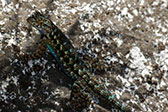
S. o. biseriatus
San Joaquin Fence Lizard

S. o. bocourtii
Coast Range Fence Lizard
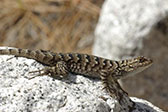
S. o. longipes
Great Basin Fence Lizard

S. o. occidentalis
Northwestern Fence Lizard
Sceloporus occidentalis biseriatus
—
San Joaquin Fence Lizard

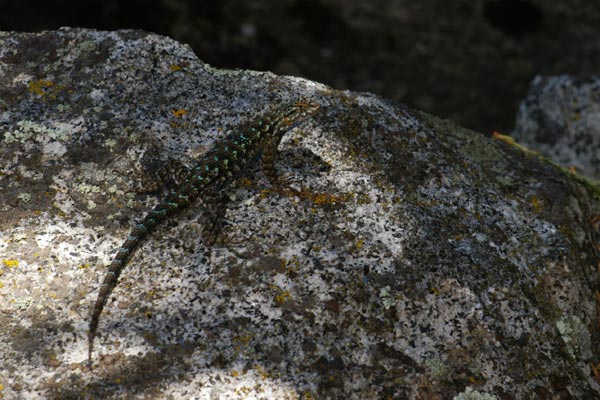
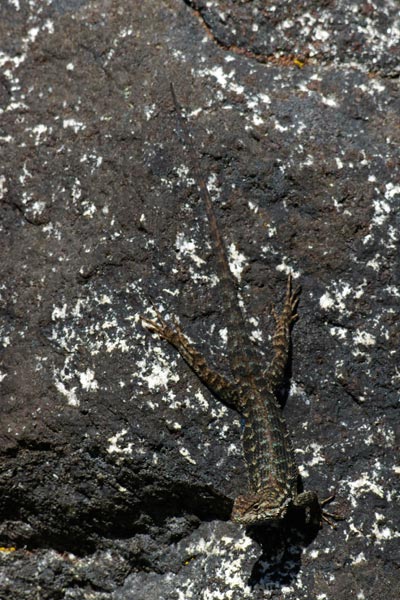
These lizards were considerably larger than the Western Fence Lizards I was used to from other parts of California. They were so large that when I first saw them, I had a hard time accepting that they were in fact the familiar Sceloporus occidentalis. They were very common on the granite boulders festooning the wilderness, but most of them scuttled off as I approached with my camera.
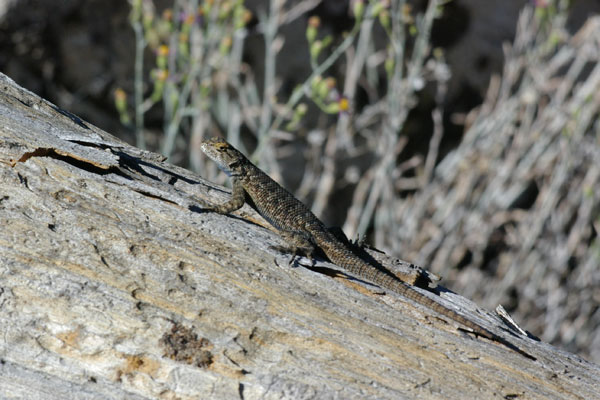
These were the largest lizards hanging around on boulders and logs near Kennedy Meadows. Apparently they reached their large sizes by running away from the slightest sign of danger, because they were extremely difficult to approach.
Sceloporus occidentalis bocourtii
—
Coast Range Fence Lizard
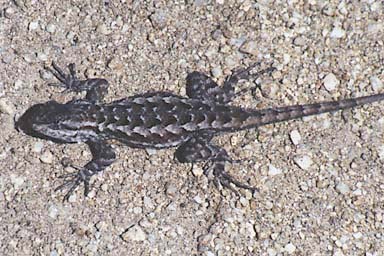
These are by far the most commonly seen lizards both in Southern California where I grew up and in Central California where I live now. There's rarely a shortage of western fence lizards, a.k.a. "swifts", a.k.a. "blue-bellies", when you just need to take a photo of a lizard.
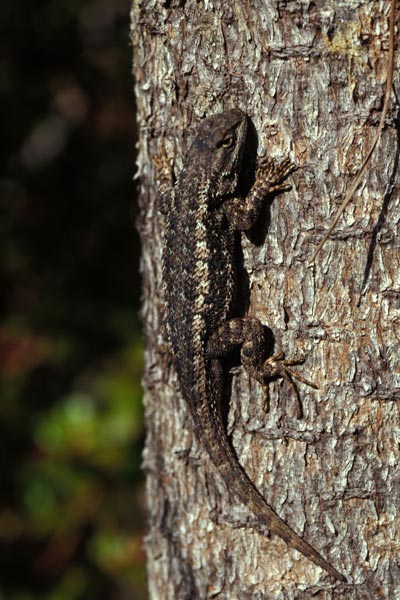
This hale and hearty individual was basking on a pine tree on a sunny but cool day in the dead of winter. I rarely see western fence lizards on pine trees, and I rarely see adults in the dead of winter.
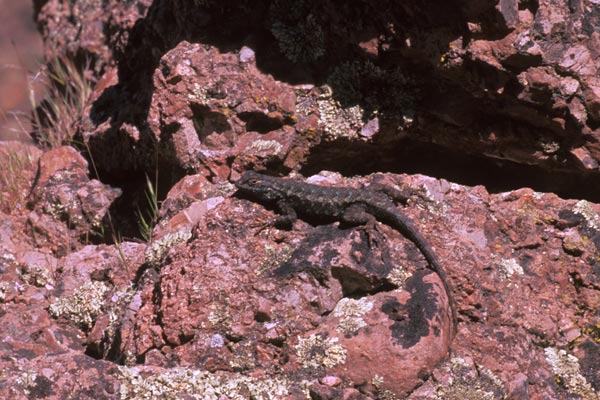
Western Fence Lizards aren't picky about whether there's a fence to hang out on. This large male was modelling on the attractive red rocks of Pinnacles National Monument.

I amused myself by counting fence lizards on this arduous but scenic hike on a very warm early spring day. One hundred and eighty-seven fence lizards. That's a lot of fence lizards.

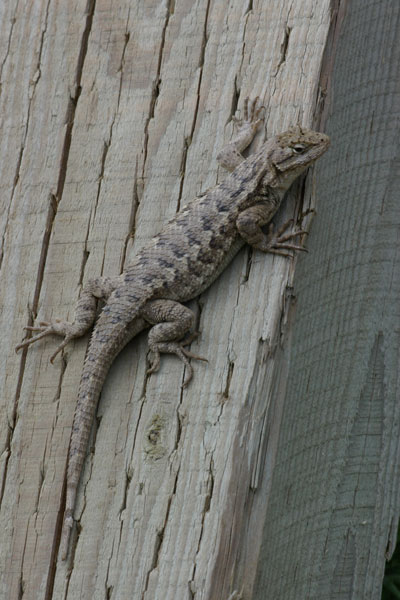
Since these lizards are the only prominent and abundant lizard species on the central California coast where I live, I usually pass right by them in search of less common targets for my camera. But I couldn't resist them this time. The weather was lizard-warm but hazy, for good photographic light; the lizards were fat and lazy, in no hurry to dash away; and the lizards were living up to their common name by posing on nearly every available fence.

I hadn't been out herping much recently when we took the dog horde out to one of our favorite off-leash canine paradises, Garland Ranch Regional Park. Western Fence Lizards are common here as they are in so many places, and I had a new wide-zoom lens to try out, so what could I do?
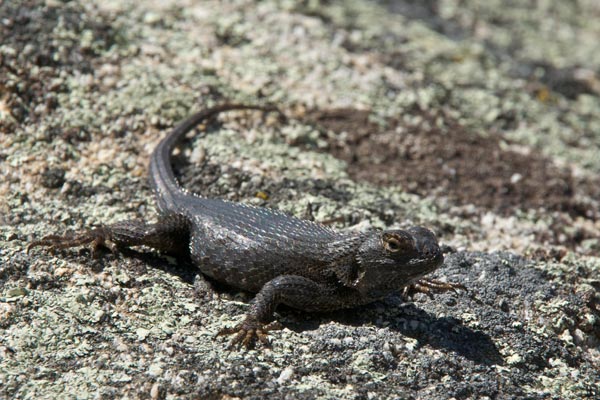
Like many lizards, fence lizards are often very dark in color when they first become active in the morning, and grow lighter as they warm up. This morning was nearly too cold for lizards, and the only fence lizards who braved the weather were very dark indeed.

While I was poking around for horned lizards, a few fence lizards were basking on nearby rocks.
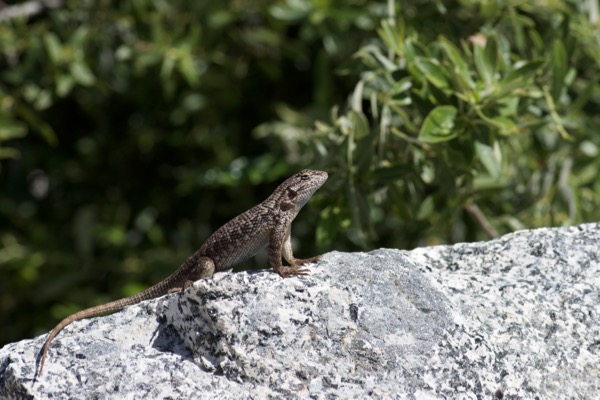
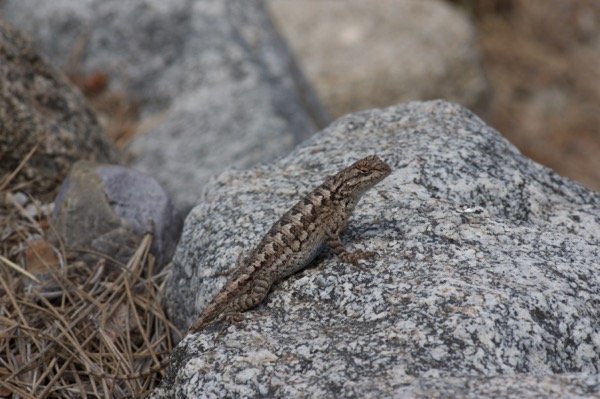
Here's a couple more from the same location a few years later. You can't always find the horned lizards you're looking for, but you can always find some fence lizards.
Sceloporus occidentalis longipes
—
Great Basin Fence Lizard
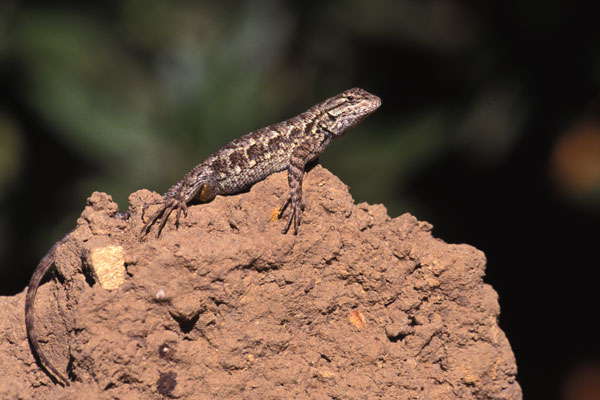
Southern California in the summer is a hotbed of fence lizard activity. In late August we saw dozens of adults like this one and many tiny hatchlings too.
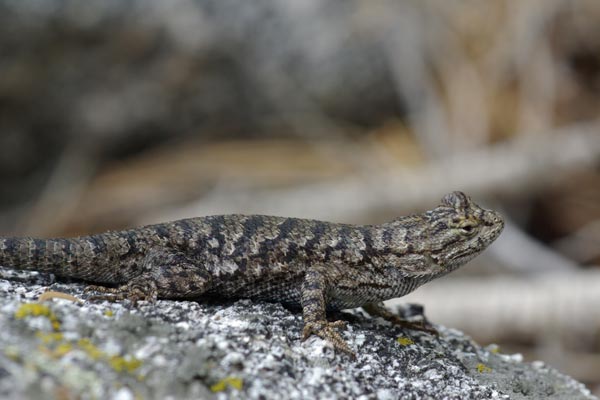
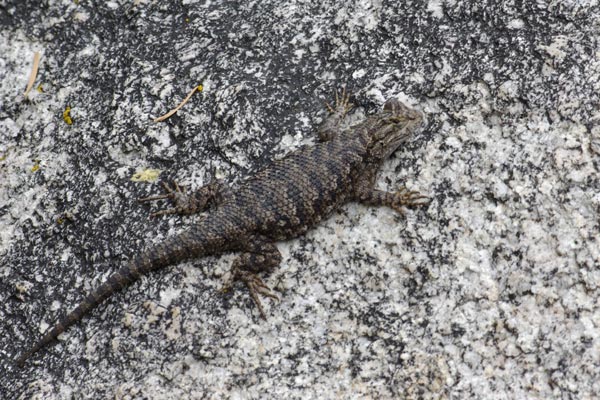


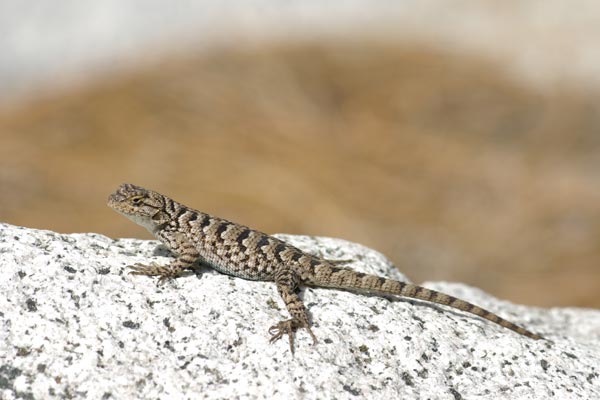
Whitney Portal Campground is set at 8000 feet, more or less midway between the high Mojave desert floor of Lone Pine and the highest point in the lower 48 states, the peak of Mount Whitney. The granite boulders were festooned with tiny baby Northern Sagebrush Lizards, and these gigantic fence lizards. These were the largest Sceloporus occidentalis I've ever seen, with the possible exception of Sceloporus occidentalis biseriatus.
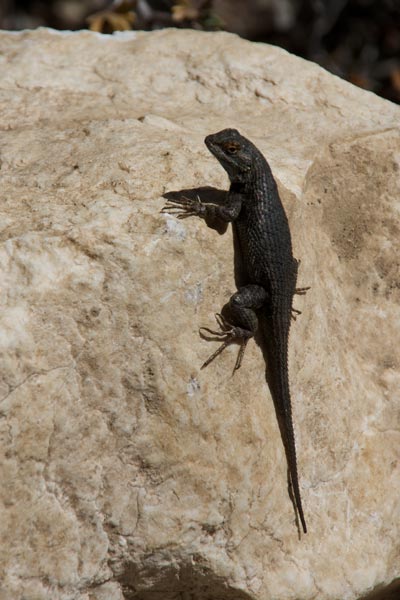
We hiked with several of our dogs one morning near Big Bear Lake. When we started, it was too chilly for lizards. Around 10:00 the Southern Sagebrush Lizards started appearing, and a little while later these much larger and darker lizards popped up here and there, perched on rocks and logs.
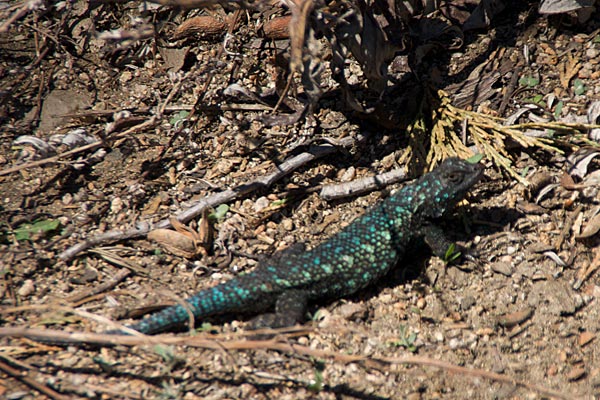
Adult male Western Fence Lizards often have some blue or green flecks mixed in with their back color. For example, see my photos of Sceloporus occidentalis biseriatus. But I've never seen one as green as this. Unfortunately, it was quite wary and I only got one photo before it scuttled off into some underbrush. I chased it around a little more but soon gave up when I saw that not only did it have no intention of coming back into the open, but also its green color was fading as it became worried about my presence.
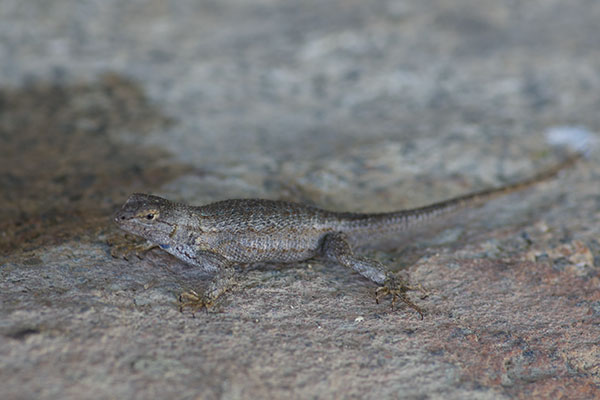
This possibly gravid female lizard was prowling the porch of our rooms at Meling Ranch.
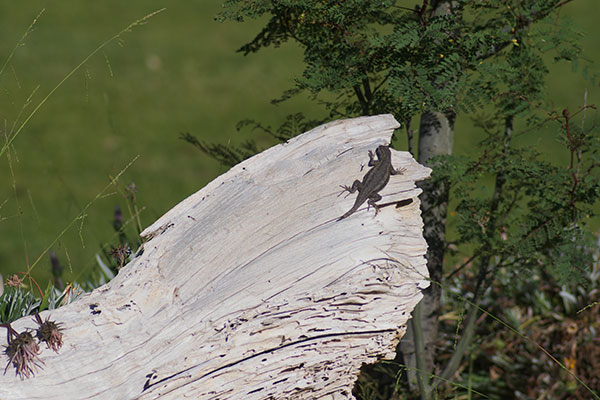
Lorrie and I watched this lizard basking on a decorative log while awaiting our delicious Meling Ranch breakfast.

After spotting a few mostly uncooperative sagebrush lizards on a trail behind the Mono Basin Visitor Center, we found this extremely cooperative fence lizard waiting back at the visitor center, basking on a rock adjacent to the sidewalk.
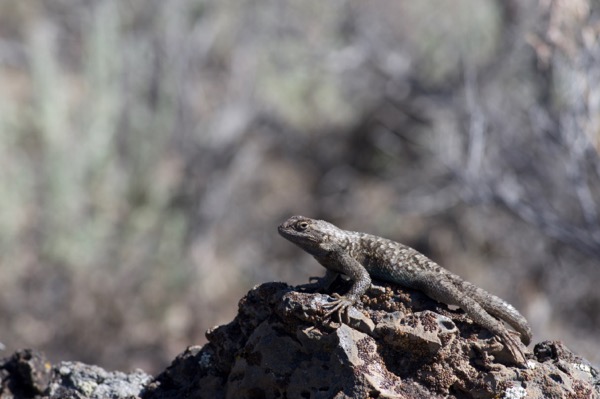
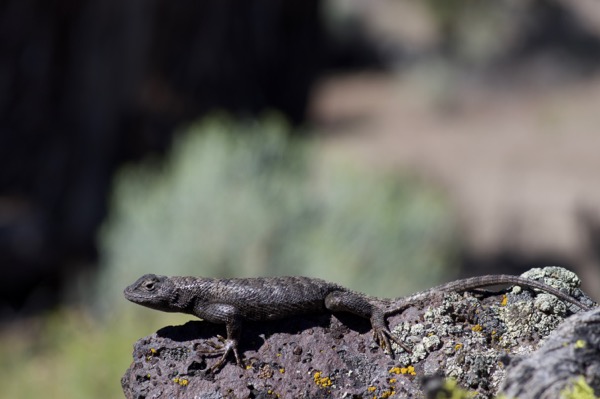
A series of dark lava outcrops were topped with a series of dark lizards.
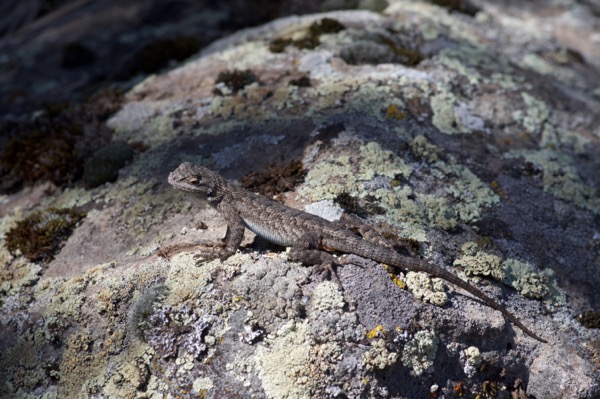
Not a particularly exciting lizard, but I have seen only a handful of lizards in Idaho, so it was mildly exciting to me.
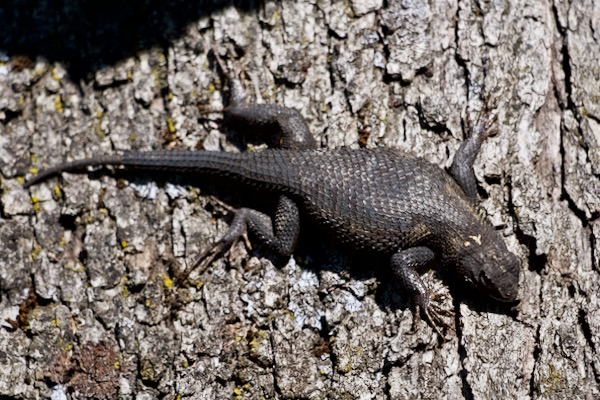
As the morning warmed up, increasingly larger and fatter fence lizards started appearing on rocks and logs and trees. When they are very dark like this, it typically means that they are still on the chilly side.

This area is close to, or perhaps inside of, the intergrade zone between S. o. longipes and S. o. occidentalis.
Sceloporus occidentalis occidentalis
—
Northwestern Fence Lizard
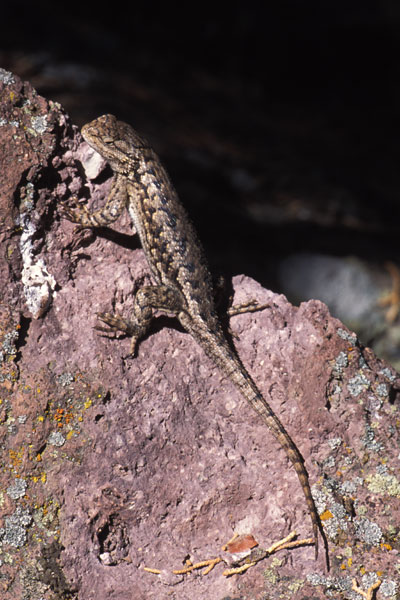
This species is being studied and it is likely to be divided up into a different set of subspecies soon. In the meantime, I'm using the classification from the Society for the Study of Amphibians and Reptiles and the range map of Ryan Calsbeek. That classifies these Oregon lizards as S. o. occidentalis.
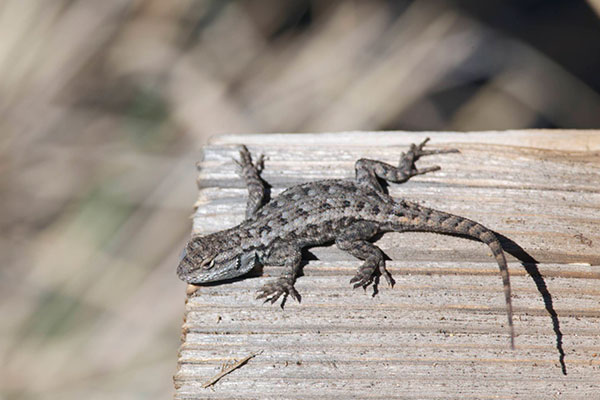
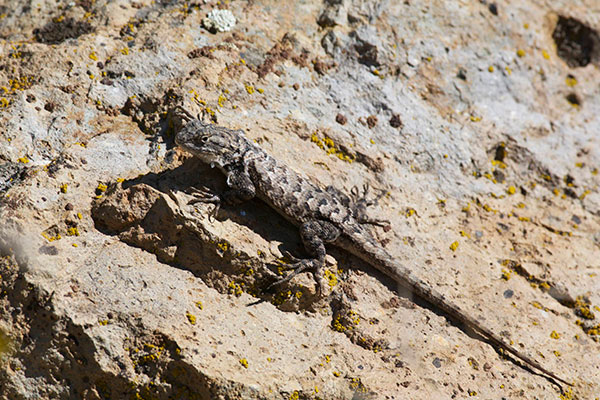

I had seen only a handful of lizards in the preceding few days, though we had been out in beautiful wild areas with warm temperatures. So I was happy to see that Smith Rock State Park was still festooned with fence lizards. I saw twenty or so in a couple of hours.
Online references:
- Sceloporus occidentalis bocourtii account on CaliforniaHerps.com
- Sceloporus occidentalis longipes account on CaliforniaHerps.com
- Sceloporus occidentalis occidentalis account on CaliforniaHerps.com
- Sceloporus occidentalis taylori account on CaliforniaHerps.com
Printed references:
- Basey, H. E. 1976. Discovering Sierra Reptiles and Amphibians
- Behler, J. L., King, F. W. 1979. The Audubon Society Field Guide to North American Reptiles & Amphibians
- Crother, B. I. (ed.) 2017. Scientific and Standard English Names of Amphibians and Reptiles of North America North of Mexico, with Comments Regarding Confidence in Our Understanding, Eighth Edition
- Grismer, L. L. 2002. Amphibians and Reptiles of Baja California Including its Pacific Islands and the Islands in the Sea of Cortés
- Henson, P., Usner, D. J. 1993. The Natural History of Big Sur
- McPeak, R. H. 2000. Amphibians and Reptiles of Baja California
- Rogner, M. 1997. Lizards
- Schoenherr, A. A. 1992. A Natural History of California
- Shedd, J. D. 2005. Amphibians and Reptiles of Bidwell Park
- Smith, H. M. 1995. Handbook of Lizards: Lizards of the United States and Canada
- Smith, H. M., Brodie, E. D. Jr. 1982. Reptiles of North America: A Guide to Field Identification
- Stebbins, R. C. 2003. Peterson Field Guide to Western Reptiles and Amphibians, Third Edition
- Storm, R. M., Leonard, W. P. 1995. Reptiles of Washington and Oregon